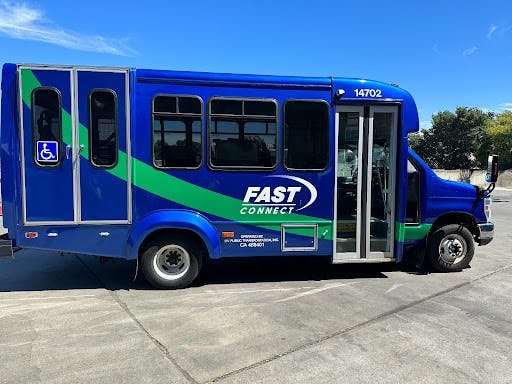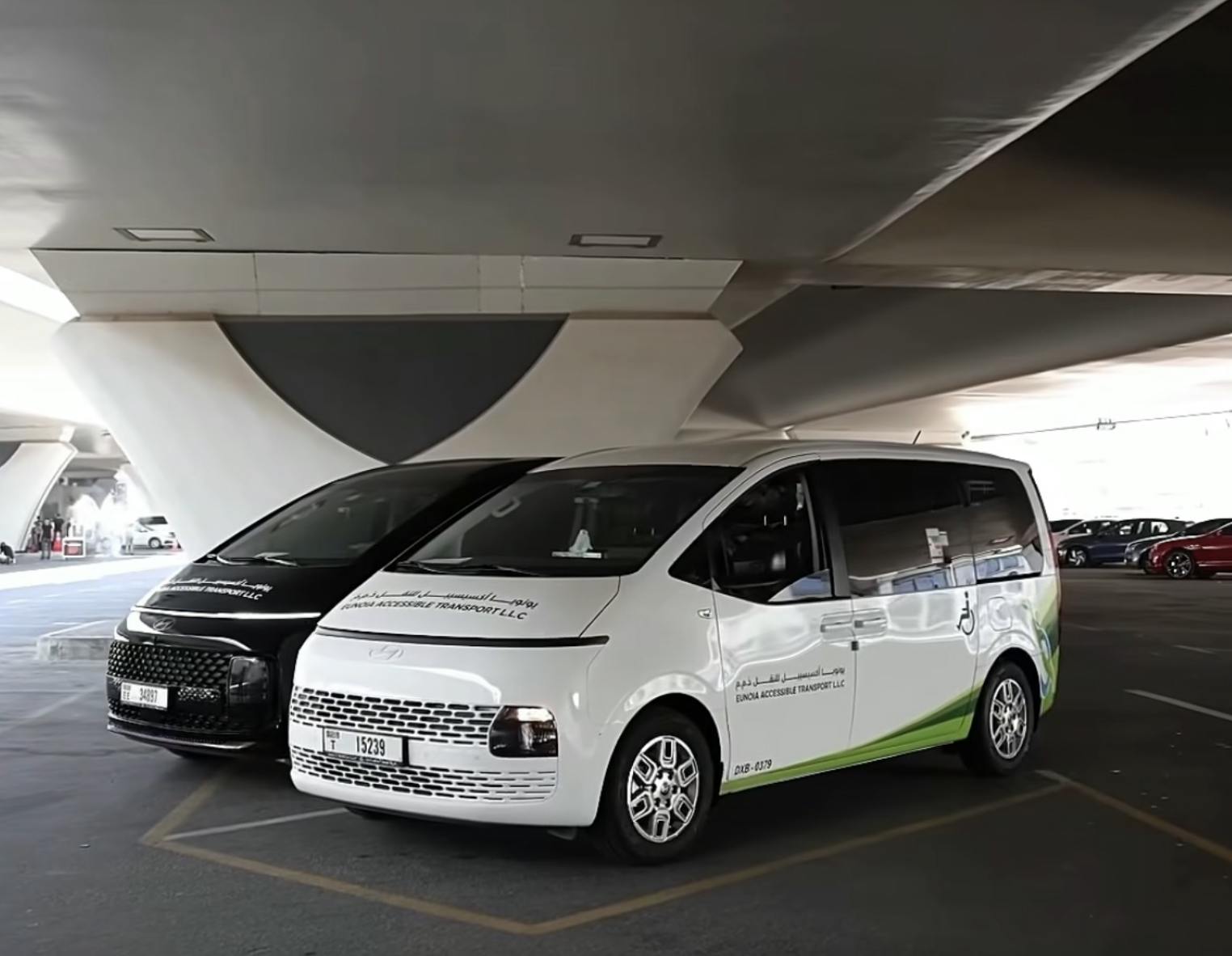

California, Ohio Agencies Team with TRC to Bring Increased Efficiency, Expanded Mobility
Facing similar issues caused by limited budgets, the impacts caused by COVID, and more, Fairfield, Calif.’s FAST Transit and Ohio’s Chillicothe Transit System (CTS) were both looking for a way to more efficiently provide services to the communities they serve.
Both turned to The Routing Company (TRC), utilizing the company’s proprietary software to solve their issues while also expanding mobility options.
After finding significant success, CTS, FAST, and their supplier partner TRC have earned one of METRO’s Innovative Solutions Awards for Mobility.
“We are deeply honored to receive METRO Magazine's Innovative Solutions Awards for 2024, alongside our incredible partners,” says James Cox, CEO at TRC. “This recognition underscores our commitment to revolutionizing public transit through cutting-edge technology and innovative solutions. Our collaborative efforts with CTS and FAST have also demonstrated the transformative power of our Pingo platform, enhancing operational efficiency and rider experience through on-demand transit and commingled paratransit.”
FAST’s innovative new approach to operating paratransit, microtransit, and their fixed-route has improved transit equity, lowered operating costs, and grown system ridership in a transit network that is reflective of many small agencies across the country.
FAST Transit’s Switch to Commingling
FAST Transit has provided public transportation for the City of Fairfield and surrounding communities since 1975.
Northeast of San Francisco’s Bay Area, the City of Fairfield is the county seat of Solano County with a population of more than 120,000 residents spread across 41 square miles.
FAST used to operate eight fixed routes, and now operates five. Due to reduced ridership from the COVID-19 pandemic, FAST recognized a need to reimagine its services while maintaining effective cost management.
In 2020, the agency initiated a Comprehensive Operational Analysis (COA) to inform development of a 10-year roadmap to redesign and reinvigorate demand response, paratransit, and fixed-route services, as well as better support underserviced areas needing greater transit frequency and reduced travel times.
The study recommended FAST replace its underutilized fixed routes with on-demand transit to deliver more personal, efficient, and responsive transit to local residents. It also suggested FAST’s new on-demand fleet, FAST Connect, should commingle both general public and complementary ADA trips with the same fleet to maximize efficiency.
FAST released a competitive RFP for a software solution that could help it commingle its services. Ultimately, the agency partnered with TRC, using TRC’s Pingo platform as the software solution to power the new and revitalized services which launched in fall of 2023.
“When reviewing proposals, it was important to FAST that the new system include a rider app that could be used by both microtransit and paratransit riders to schedule rides,” explains Diane Feinstein, FAST’s transportation manager. “FAST chose TRC because of the extensive customer service —pre- and post-launch — it pledged to provide FAST to comingle its paratransit and microtransit services. TRC’s multi-year services were reasonably priced for a small operator.”
FAST, TRC, and MV Transportation — the agency’s contractor — staff met at least weekly for six months ahead of the July 2023 launch.
The first transition on July 1, 2023, had riders use TRC’s Ride Pingo riders app or MV dispatch to schedule rides.
“We were amazed at how many riders immediately began using TRC’s Ride Pingo riders app,” says Feinstein. “The more riders that used the app has meant more time MV dispatch have had to complete other critical safety and customer service tasks.”
FAST had originally planned to comingle both microtransit and paratransit services in July 2023 but decided it would be more advantageous to implement the program in two phases, starting with transitioning paratransit riders to the new system. Therefore, the full commingling of both services occurred in September 2023.
The July initial phase allowed FAST, MV, and TRC to launch and work through issues with paratransit service, which provides fewer rides overall.
Service zones included prominent local destinations like the Fairfield Transportation Center, Solano County Health and Human Services, Solano Town Center, Cordelia Library, Travis Air Force Base, David Grant Medical Center, and the Fairfield-Vacaville Train Station.
FAST used to operate eight fixed routes, and now operates five. Due to reduced ridership from the COVID-19 pandemic, FAST recognized a need to reimagine its services while maintaining effective cost management.
FAST Seeing Results
Since launching commingled paratransit services with TRC in 2023, FAST Transit has more than doubled on-demand ridership.
The service, which uses existing paratransit vehicles, not only replaced unproductive fixed routes, it dramatically improved the rider experience and the efficiency FAST delivered transit to residents.
The results include a 100% increase in trips in the first month of commingling; nearly 1,000 sign ups to Ride Pingo; a 99% on-time performance; less than 15-minute wait times; over 60% booking within the Ride Pingo app versus call-ins; more than 25,000 people moved; and a 4.7 (out of 5) average rider trip rating.
FAST’s innovative new approach to operating paratransit, microtransit, and their fixed-route has improved transit equity, lowered operating costs, and grown system ridership in a transit network that is reflective of many small agencies across the country.
“It’s convenient to have two modes of our operation handled by one provider,” says Feinstein. “And with commingling and having the paratransit community on the same vehicle, it makes somebody who has a disability feel like they're just another member of the general public. It offers a lot of opportunities for them [riders] to meet other people.”
CTS needed to offer riders a custom app that allowed them to book and track rides in real time and provide fixed-route drivers with automated passenger counts.
Improving Operational Efficiencies
For more than 40 years, CTS has moved the people of Chillicothe and surrounding Ross County, Ohio, with a fleet of approximately 25 vehicles providing fixed routes and general public on-demand transit services.
The agency had long utilized legacy software and wanted to reinvigorate its transit network with new technology.
More specifically, CTS needed to offer riders a custom app that allowed them to book and track rides in real time and provide fixed-route drivers with automated passenger counts.
The agency was also looking to better manage and deliver community transit services, while finding greater efficiency and innovation in its approach.
In late 2023, CTS contacted TRC after the company had been named to the Ohio Department of Transportation’s (ODOT) five-year statewide contract, namely for providing new scheduling and dispatch software to agencies across the state.
CTS wanted flexibility and chose TRC because it could facilitate multiple operating modes — on-demand and fixed route — in a single Pingo platform, allowing for system-wide improvements at the agency.
“We were previously using software that had no limitation to the number of on-demand trips that could be scheduled; it didn’t consider how many drivers were on shift at any given time to know how much supply was available to meet demand. It also didn’t automatically route trips properly,” explains Amy Arnold, transit coordinator at CTS. “Each driver had multiple tickets per shift instead of one manifest for their shift and those tickets could overlap with each other, immediately setting drivers up for inefficiency and late pickups at no fault of their own.”
CTS used Pingo to integrate multiple modes of transit into just one platform — thereby improving system responsiveness, efficiency, accessibility, and fleet utilization.
The agency also leveraged TRC’s ability to deliver robust, National Transportation Database-compliant and custom reporting capabilities offered by Pingo Analytics, as well as expert service analysis and flexible service design.
“Adopting tech to our agency was a very welcome change, from the director to the drivers, and everyone in between,” says Arnold. “The frustration level coming from using such a low-tech system prior to TRC had everyone collectively ready for change. The switch to a much higher tech system was an initial struggle for some, but easily and quickly worked through.”
CTS used TRC's Pingo to integrate multiple modes of transit into just one platform — thereby improving system responsiveness, efficiency, accessibility, and fleet utilization.
Seeing Immediate Results
Immediately following the new service launch in early 2024, the agency’s utilization and rider experience improved significantly, including shorter 20-minute average wait times; an 83% trip fulfillment rate, which is up from 60% prior to Pingo implementation; and a 22% increase in utilization — drivers now complete over four trips per hour versus less than three per hour before Pingo implementation.
By all accounts, innovating its approach to service delivery has allowed CTS to deliver a better rider experience, greater operational efficiency, and drastically improved responsiveness in managing data and dispatching.
For riders, it means only using one app for all transit services, which has ultimately provided a more reliable, equitable, and affordable transit experience.
“TRC was the breath of fresh air CTS needed coming from a very strained relationship with our previous software provider. If we need a function that isn’t currently offered, TRC works to make it happen. If we need a custom report, they build it,” says Arnold about the agency’s experience working with TRC. “[Winning this award] would not have happened without TRC, and we would like to express our gratitude and appreciation to them for our partnership and making this possible.”


